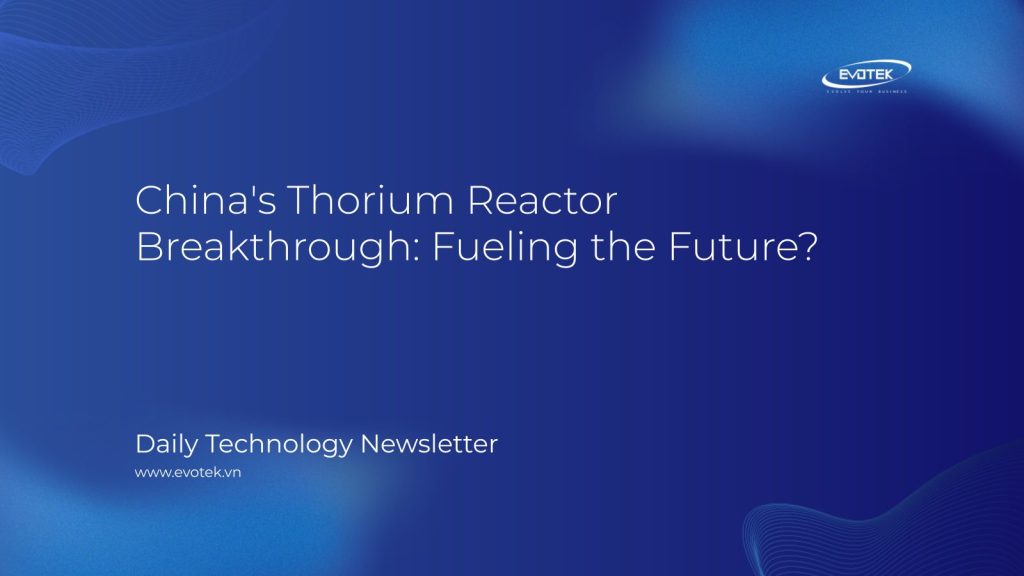China has achieved a groundbreaking milestone in nuclear energy by successfully operating and refueling the world’s first thorium reactor mid-run. This feat, accomplished in the Gobi Desert, signals a potential shift towards safer, cleaner, and more sustainable nuclear power.
What Makes Thorium Special?
Unlike traditional uranium reactors, this innovative design utilizes thorium dissolved in molten salt. This “molten salt reactor” (MSR) design offers several advantages:
- Enhanced Safety: Meltdowns are less of a concern due to the fuel already being in a molten state. Leaks would simply solidify, preventing catastrophic events.
- Reduced Waste: Thorium produces significantly less long-lived radioactive waste compared to uranium.
- No Weapons-Grade Byproducts: Thorium is unsuitable for nuclear weapons production, enhancing global security.
- Compact and Scalable: MSRs can be smaller and potentially located in more diverse locations.
This technology promises a cleaner, safer, and more efficient alternative to conventional nuclear power.
A Legacy of Research
Thorium research isn’t new. The U.S. explored MSR technology in the mid-20th century but abandoned it in favor of uranium, largely due to its dual use in weapons production. However, this research left behind a wealth of publicly available data.
According to Xu Hongjie, the project’s chief scientist, China capitalized on this legacy. His team at the Shanghai Institute of Applied Physics meticulously studied declassified documents, replicated experiments, and advanced the technology. “The US left its research publicly available, waiting for the right successor,” Xu said. “We were that successor.”
On-the-Fly Refueling: A Game Changer
The reactor achieved criticality in October 2023 and reached full power by June 2024. The real breakthrough came in April 2025 with the successful mid-run refueling. This demonstrates the potential for continuous operation, further enhancing safety and reducing costs.
Xu boldly stated, “We now lead the global frontier,” highlighting China’s advancement in thorium reactor technology.
Beyond the Technology: Abundance and Sustainability
Thorium is significantly more abundant than uranium. China possesses vast thorium reserves, potentially capable of powering the nation for tens of thousands of years. Furthermore, the reduced waste and inherent safety features make thorium a more sustainable and secure energy source.
What’s Next?
China is already planning a larger 10-megawatt reactor, aiming for criticality by 2030. While detailed scientific publications are scarce, the focus remains on real-world application.
The Gobi reactor is experimental, but it’s a critical step. Molten salt reactors could potentially bridge the gap between renewable sources like solar and wind, providing a stable and reliable energy supply.
Other nations are also exploring thorium. India is advancing its thorium-based nuclear program, and Norway is investing in thorium fuel production. In the U.S., research institutions and private companies are actively modeling MSRs. The International Atomic Energy Agency (IAEA) is also coordinating global research efforts.
The future of thorium hinges on political will, engineering advancements, and public acceptance. China’s achievement marks a significant leap forward, potentially ushering in a new era of clean and sustainable nuclear energy.

 日本語
日本語 한국어
한국어 Tiếng Việt
Tiếng Việt 简体中文
简体中文